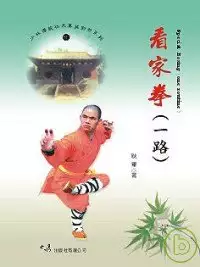Generation and recom的問題,透過圖書和論文來找解法和答案更準確安心。 我們找到下列包括價格和評價等資訊懶人包
Generation and recom的問題,我們搜遍了碩博士論文和台灣出版的書籍,推薦耿軍寫的 看家拳(一路) 和耿軍的 炮拳都 可以從中找到所需的評價。
這兩本書分別來自大展 和大展所出版 。
國立政治大學 資訊管理學系 林怡伶所指導 唐思琪的 基於增強學習的直播電商推薦系統 (2021),提出Generation and recom關鍵因素是什麼,來自於直播電商、推薦系統、強化學習、探索與利用之權衡、神經網路。
而第二篇論文國立中興大學 電機工程學系所 林俊良所指導 陳其宇的 理想物聯網的雛形實現 (2020),提出因為有 物聯網、智慧醫療、長期健康照護、穿戴式裝置的重點而找出了 Generation and recom的解答。
看家拳(一路)

為了解決Generation and recom 的問題,作者耿軍 這樣論述:
少林看家拳是宋代福居禪師為防止有些寺僧學藝不精,出寺後有辱少林聲譽,便召集寺內武僧高手研究提煉了少林武術的精華招式,傳授給26名武僧,設13道關卡,每道關卡由兩名武僧把守,規定任何僧俗弟子想出山,必須打敗這守關武僧,方可出師下山,否則將受跪香的懲罰,並苦苦修練。這守關的招式漸漸形成了套路——少林十三路看家拳。 1906年少林弟子貞方把一份少林看家拳譜帶回山東故鄉,在1936年把該套路拳譜傳給了少林寺第二十九世著名武僧貞秋的弟子素法,素法研究五十餘年,1986年又傳給了關門弟子耿軍。 Brief Introduction to the Routine Special Boxing(o
ne routine) Shaolin special boxing is an essential routine, originated to prevent the monk of the temple who didn't learn the skill well and disgraced the Shaolin's prestige after they exited the temple by the Buddhist monk Fuju at Song Dynasty. He called together the proficient Wushu monks in the t
emple to study and abstract the essential postures of the Shaolin Wushu, and taught it to 26 Wushu monks, then set 13 toll-gates with each toll-gates guarded by two Wushu monks, and stipulated that any monk or common disciple who wanted to go out from the mountain must beat the monks who guarded the
toll-gates at first, otherwise, he must accept the punishment of joss sticks kneeling and make more efforts to learn skills. These postures which were used for guarding the toll-gates gradually formed a Taolu——The Shaolin Special Boxing of 13 routines.In 1906, Zhenfang, one Shaolin disciple, carrie
d a copy of the book of the Shaolin Special Boxing back to his hometown Shandong Province and passed it to Sufa who is the disciple of the 29th generation notable Wushu monk Zhenqiu of the Shaolin Temple in 1936. Sufa studied it for more than 50 years, and passed it to his last disciple Geng Jun. 作者
簡介 耿軍(法號釋德君) 1968年11月出生於河南省孟州市,係少林寺三十一世皈依弟子。中國武術七段、全國十佳武術教練員、中國少林武術研究會副秘書長、焦作市政協十屆常委、濟南軍區特警部隊特邀武功總教練、洛陽師範學院客座教授、英才教育集團董事長。1989年創辦孟州少林武術院、2001年創辦英才雙語學校。先後獲得河南省優秀青年新聞人物、全國優秀武術教育家等榮譽稱號。 1983年拜在少林寺住持素喜法師和著名武僧素法大師門下學藝,成為大師的關門弟子,後經素法大師引薦,又隨螳螂拳一代宗師李占元、金剛力功于憲華等大師學藝。在中國鄭州國際少林武術節、全國武林精英大賽、全國武術演武大會等比賽中6次獲得
少林武術冠軍;在中華傳統武術精粹大賽中獲得了象徵少林武術最高榮譽的「達摩杯」一座。他主講示範的36集《少林傳統功夫》教學片已由人民體育音像出版社出版發行。他曾多次率團出訪海外,在國際武術界享有較高聲譽。 他創辦的孟州少林武術院,現已發展成為豫北地區最大的以學習文化為主、以武術為辦學特色的封閉式、寄宿制學校,是中國十大武術教育基地之一。 Brief Introduction to the Author Geng Jun(also named Shidejun in Buddhism), born in Mengzhou City of Henan Province, November 1
968, is a Bud-dhist disciple of the 31st generation, the 7th section of Chinese Wu shu, national "Shijia" Wu shu coach, Vice Secretary General of China Shaolin Wu shu Research Society, standing committee member of 10th Political Consultative Conference of Jiaozuo City, invited General Kungfu Coach o
f special police of Jinan Military District, visiting professor of Luoyang Normal University, and Board Chairman of Yingcai Education Group. In 1989, he estab-lished Mengzhou Shaolin Wu shu Institute; in 2001, he estab-lished Yingcai Bilingual School. He has been successively awarded honorable title
s of "Excellent Youth News Celebrity of Henan Province" "State Excellent Wu shu Educationalist" etc. In 1983, he learned Wu shu from Suxi Rabbi, the Abbot of Shaolin Temple, and Grandmaster Sufa, a famous Wu shu monk, and became the last disciple of the Grandmaster. Then recom-mended by Grandmas
ter Sufa, he learned Wu shu from masters such as Li Zhanyuan, great master of mantis boxing, and Yu Xianhua who specializes in Jingangli gong. He won the Shaolin Wu shu champion for 6 times in China Zhengzhou International Wu shu Festival, National Competition of Wu lin Elites, National Wu shu Perfo
rmance Conference, etc. and one "Damo Trophy" that symbolizes the highest honor of Shaolin Wu shu in Chinese Traditional Wu shu Succinct Competition. 36 volumes teaching VCD of Shaolin Traditional Wu shu has been published and is-sued by People's Sports Audio Visual Publishing House. He has led dele
gations to visit overseas for many times, enjoying high reputation in the martial art circle of the world. Mengzhou Shaolin Wu shu Institute, established by him, has developed into the largest enclosed type boarding school of Yubei(north of Henan Province)area, which takes knowledge as primary and
Wu shu as distinctiveness, also one of China's top ten Wu shu education bases.
基於增強學習的直播電商推薦系統
為了解決Generation and recom 的問題,作者唐思琪 這樣論述:
近年來,直播電商逐漸受到重視。不同於傳統的電商和單向推播的電視購物,直播電商更加強調即時互動性。由於開設直播的成本低,直播主發起直播的頻率很高、商品也是不斷推成出新,這些都促成了複雜且快速變動的環境,而推薦系統能夠幫助消費者在資訊爆炸的情況下快速做出決定。過往的推薦系統研究注重於準確率的最佳化,不只引發了同溫層效應,更因為總是推薦類似的商品,長期下來導致消費者的不滿意以及流失。為了在精準推薦與探索新喜好的取捨中獲得較好的平衡,我們將此議題看作是一個具備使用者情境的多臂吃角子老虎機問題。此研究在直播電商這種新的商業情境下,提出一個基於強化學習的推薦系統。它能夠通過靜態的顧客特徵以及具時序性的顧
客特徵,找出顧客、直播主以及商品之間的關係。我們使用了一種循環神經網路——門基循環單元,來找出顧客隨時間變化的喜好。我們的直播電商推薦系統能夠藉由變分自動變碼器來模糊化顧客的特徵,並在推薦商品的過程中利用貝葉斯神經網路來引入不確定性,來達成控制探索顧客喜好與利用的平衡。據我們所知,我們是第一個提出以基於神經網路的上下文吃角子老虎機演算法,來解決直播電商平台環境下推薦問題的研究。我們比較了經典的多臂吃餃子老虎機演算法,並透過真實世界資料的實驗來初步驗證了我們的理論,並且展示了其在商業實務問題中的潛在應用。
炮拳

為了解決Generation and recom 的問題,作者耿軍 這樣論述:
少林炮拳古稱炮捶,是少林寺秘不外傳的精華套路,有「諸拳之王」之稱。因出拳威猛如發炮,拳勢動作多以炮為名,故名炮拳,本套路由45動作組成,適合有一定少林拳基礎者演練。 Brief Introduction to the Routine Cannon Boxing Shaolin Cannon boxing, anciently named cannon pounding, is a secret essential routine, with the title of “King of boxing”. It is named cannon boxing for its forcef
ul and swift fist like cannon and most its actions are named after cannon. This routine consists of 45 movements. and it is suitable for the persons who has certain wushu base to perform or practice. 作者簡介 耿軍(法號釋德君) 1968年11月出生於河南省孟州市,係少林寺三十一世皈依弟子。中國武術七段、全國十佳武術教練員、中國少林武術研究會副秘書長、焦作市政協十屆常委、濟南軍區特警部隊特邀武
功總教練、洛陽師範學院客座教授、英才教育集團董事長。1989年創辦孟州少林武術院、2001年創辦英才雙語學校。先後獲得河南省優秀青年新聞人物、全國優秀武術教育家等榮譽稱號。 1983年拜在少林寺住持素喜法師和著名武僧素法大師門下學藝,成為大師的關門弟子,後經素法大師引薦,又隨螳螂拳一代宗師李占元、金剛力功于憲華等大師學藝。在中國鄭州國際少林武術節、全國武林精英大賽、全國武術演武大會等比賽中6次獲得少林武術冠軍;在中華傳統武術精粹大賽中獲得了象徵少林武術最高榮譽的「達摩杯」一座。他主講示範的36集《少林傳統功夫》教學片已由人民體育音像出版社出版發行。他曾多次率團出訪海外,在國際武術界享有較高
聲譽。 他創辦的孟州少林武術院,現已發展成為豫北地區最大的以學習文化為主、以武術為辦學特色的封閉式、寄宿制學校,是中國十大武術教育基地之一。 Brief Introduction to the Author Geng Jun(also named Shidejun in Buddhism), born in Mengzhou City of Henan Province, November 1968, is a Bud-dhist disciple of the 31st generation, the 7th section of Chinese Wu shu, national "
Shijia" Wu shu coach, Vice Secretary General of China Shaolin Wu shu Research Society, standing committee member of 10th Political Consultative Conference of Jiaozuo City, invited General Kungfu Coach of special police of Jinan Military District, visiting professor of Luoyang Normal University, and
Board Chairman of Yingcai Education Group. In 1989, he estab-lished Mengzhou Shaolin Wu shu Institute; in 2001, he estab-lished Yingcai Bilingual School. He has been successively awarded honorable titles of "Excellent Youth News Celebrity of Henan Province" "State Excellent Wu shu Educationalist" e
tc. In 1983, he learned Wu shu from Suxi Rabbi, the Abbot of Shaolin Temple, and Grandmaster Sufa, a famous Wu shu monk, and became the last disciple of the Grandmaster. Then recom-mended by Grandmaster Sufa, he learned Wu shu from masters such as Li Zhanyuan, great master of mantis boxing, and Y
u Xianhua who specializes in Jingangli gong. He won the Shaolin Wu shu champion for 6 times in China Zhengzhou International Wu shu Festival, National Competition of Wu lin Elites, National Wu shu Performance Conference, etc. and one "Damo Trophy" that symbolizes the highest honor of Shaolin Wu shu
in Chinese Traditional Wu shu Succinct Competition. 36 volumes teaching VCD of Shaolin Traditional Wu shu has been published and is-sued by People's Sports Audio Visual Publishing House. He has led delegations to visit overseas for many times, enjoying high reputation in the martial art circle of th
e world. Mengzhou Shaolin Wu shu Institute, established by him, has developed into the largest enclosed type boarding school of Yubei(north of Henan Province)area, which takes knowledge as primary and Wu shu as distinctiveness, also one of China's top ten Wu shu education bases.
理想物聯網的雛形實現
為了解決Generation and recom 的問題,作者陳其宇 這樣論述:
網路世界帶給人們全新的生活,人們可以無遠弗屆的接觸到各式各樣思想、文化、生活、知識與技術。隨著越來越習慣資訊服務,沉浸式的體驗受到歡迎,因此也帶動虛擬實境(VR)的蓬勃發展。同時,藉由自駕車、機器人、智慧家電等設備實現另一個面向的實體互動體驗。一般而言,設備受限於自身運算能力,需要仰賴雲端計算以完成整體的服務,物聯網的技術也因應如此需求而生。目前大眾認知,以感知層、傳輸層及應用層三大要素構成完整的物聯網體系。該領域雖已歷經多年發展,目前市面還沒有出現有效的通用服務架構。本研究認為主要成因有二:其一,目前汎用的傳輸途徑無法同時兼俱靈活性與可靠性;其二,上述單純的階層構成的運行框架無法滿足互動與
回饋的基本要求。世界衛生組織(WHO)對「智慧醫療」(eHealth)定義為”資通訊科技(ICT)在醫療及健康領域的應用”。目前全球穿戴式裝置的應用相當普遍,經由感測器與數據追蹤技術收集的各類行為與生理指標包括心跳、活動量、睡眠模式、壓力狀況或服藥持續性等,可以即時監控個人健康狀況,再利用大數據分析生活習慣與行為模式,提供個別化健康管理計畫並對偵測異常值給予提醒,或經由雲端資料通知醫療照護人員,提供照護所需。本研究提出兩個創新概念,並揭露設計原則,以彌補當今傳輸途徑與運行框架之不足。在傳輸途徑上,我們使用RF射頻構建一個在靈活性與可靠性取得平衡的傳輸協定。在運行框架上,我們構築一個可整合不同資
料形態並具有回饋機制的服務模式。最後,針對長期健康照護的主題,展現實作成果。